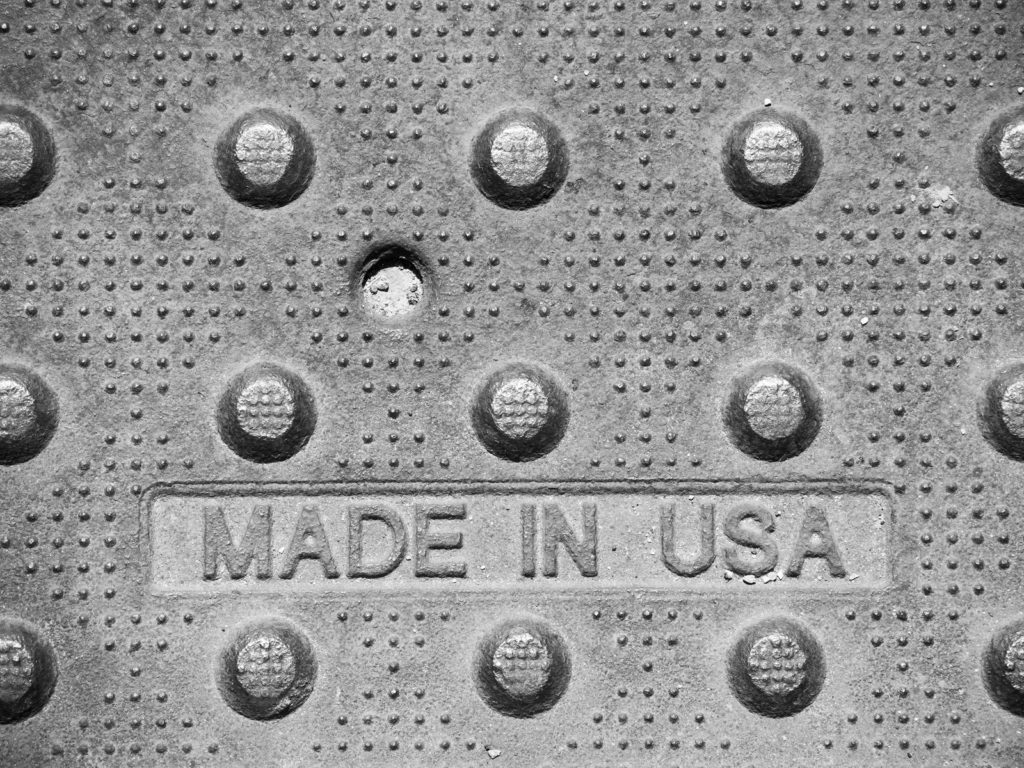Offshoring manufacturing jobs reached a peak in the 1980s and 90s. At the time, inexpensive labor was manufacturers’ prime motivation to move production out of the United States and into countries such as Malaysia, Mexico, and Taiwan.
Proponents suggested Americans should innovate while those in other countries should focus on production. Supporters of NAFTA and other free trade pacts predicted the agreements would lead to trade surpluses and generate new jobs in the U.S.
But even advocates acknowledged some drawbacks.
In the long term, labor costs in foreign countries rose as workers demanded “a bigger piece of the pie,” according to the Harvard Business Review article. Further, “U.S. companies could run themselves ragged chasing low wages from one country to another.”
 Meanwhile, manufacturing productivity in the U.S. has risen steadily — except during the Great Recession — since 1987 from a low of 70 output units to nearly 130 units last year. Profit margins rise as employees produce more units without corresponding increases in cost per unit to companies.
Meanwhile, manufacturing productivity in the U.S. has risen steadily — except during the Great Recession — since 1987 from a low of 70 output units to nearly 130 units last year. Profit margins rise as employees produce more units without corresponding increases in cost per unit to companies.
The presumptive focus on innovation hasn’t happened as quickly or to the degree as anticipated. Innovation jobs followed production jobs offshore, according to the SFGate article. U.S. manufacturers are responsible for 70% of all research and development, much of which they’ve now moved offshore to stay closer to production.
Offshoring isn’t going away. Technology and other service-sector jobs will likely see an increase in offshoring as global business services continue to cater to the IT, finance, and human resources sectors. Many global companies are likely to continue offshoring manufacturing for the same reasons they reshore: shorter supply chains to foreign markets and reduced costs.
However, revisions in existing trade agreements appear to have reversed the offshoring trend by reshoring many manufacturing jobs.
Several U.S. executives decided to reshore production after analyzing the total cost of overseas manufacturing. Pennsylvania-based K’Nex makes toys like Lincoln Logs, Tinker Toys, and other building sets. Company leaders followed the original offshoring trend, but forward-thinking K’Nex CEO Michael Araten later reevaluated.
Araten explained in the Industry Week interview that several factors went into the company’s move to reshore, including the need for a shorter supply chain, “the long lead time” needed to ship toys home, and the changing tastes of 8-year-olds. He also said trade agreements — some of which do not even directly involve the United States — impact manufacturing costs.
With big data analytics and the move toward more supply chain visibility, decision-makers are likely to seek more granular detail regarding costs and benefits as part of their shoring procedures. Decision-makers considering onshoring and offshoring will likely continue to be influenced by labor availability and cost, supply chain costs, trade agreements, and all factors that impact the bottom line. Machines running at full capability and eliminating costly downtime through fast high-quality repair will continue to be a key part of managing the bottom line.
 The professionals at Global Electronic Services will continue to be your reliable partners for machine repair. Contact Global Electronic Services experts to meet all your industrial electronic, servo motor, AC or DC motor, hydraulic, or pneumatic needs. We’re ready to help you increase your business profitability by keeping your machines in good repair. Contact us online or call us at 877.249.1701.
The professionals at Global Electronic Services will continue to be your reliable partners for machine repair. Contact Global Electronic Services experts to meet all your industrial electronic, servo motor, AC or DC motor, hydraulic, or pneumatic needs. We’re ready to help you increase your business profitability by keeping your machines in good repair. Contact us online or call us at 877.249.1701.